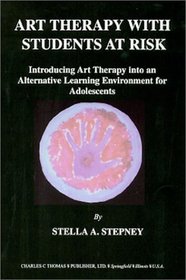Search -
Art Therapy With Students at Risk: Introducing Art Therapy into an Alternative Learning Environment for Adolescents
Art Therapy With Students at Risk Introducing Art Therapy into an Alternative Learning Environment for Adolescents
Author:
Art Therapy With Students At Risk: Introducing Art Therapy into an Alternative Learning Environment for Adolescents represents the research, planning, organization, development, and implementation of an art therapy program with an at-risk population. The book includes 5 tables, 14 color plates, and 7 appendices and is divided into six sections: ... more »
Author:
Art Therapy With Students At Risk: Introducing Art Therapy into an Alternative Learning Environment for Adolescents represents the research, planning, organization, development, and implementation of an art therapy program with an at-risk population. The book includes 5 tables, 14 color plates, and 7 appendices and is divided into six sections: ... more »
ISBN-13: 9780398071950
ISBN-10: 0398071950
Pages: 119
Edition: 1
Rating: ?
ISBN-10: 0398071950
Pages: 119
Edition: 1
Rating: ?
0 stars, based on 0 rating
Publisher: Charles C. Thomas Publisher
Book Type: Hardcover
Other Versions: Paperback
Members Wishing: 0
Reviews: Amazon | Write a Review
Book Type: Hardcover
Other Versions: Paperback
Members Wishing: 0
Reviews: Amazon | Write a Review
Genres:
- Health, Fitness & Dieting >> Psychology & Counseling >> Neuropsychology
- Teen & Young Adult >> Personal Health >> General
- Nonfiction >> Education >> General
- Nonfiction >> Education >> Special Education >> General




